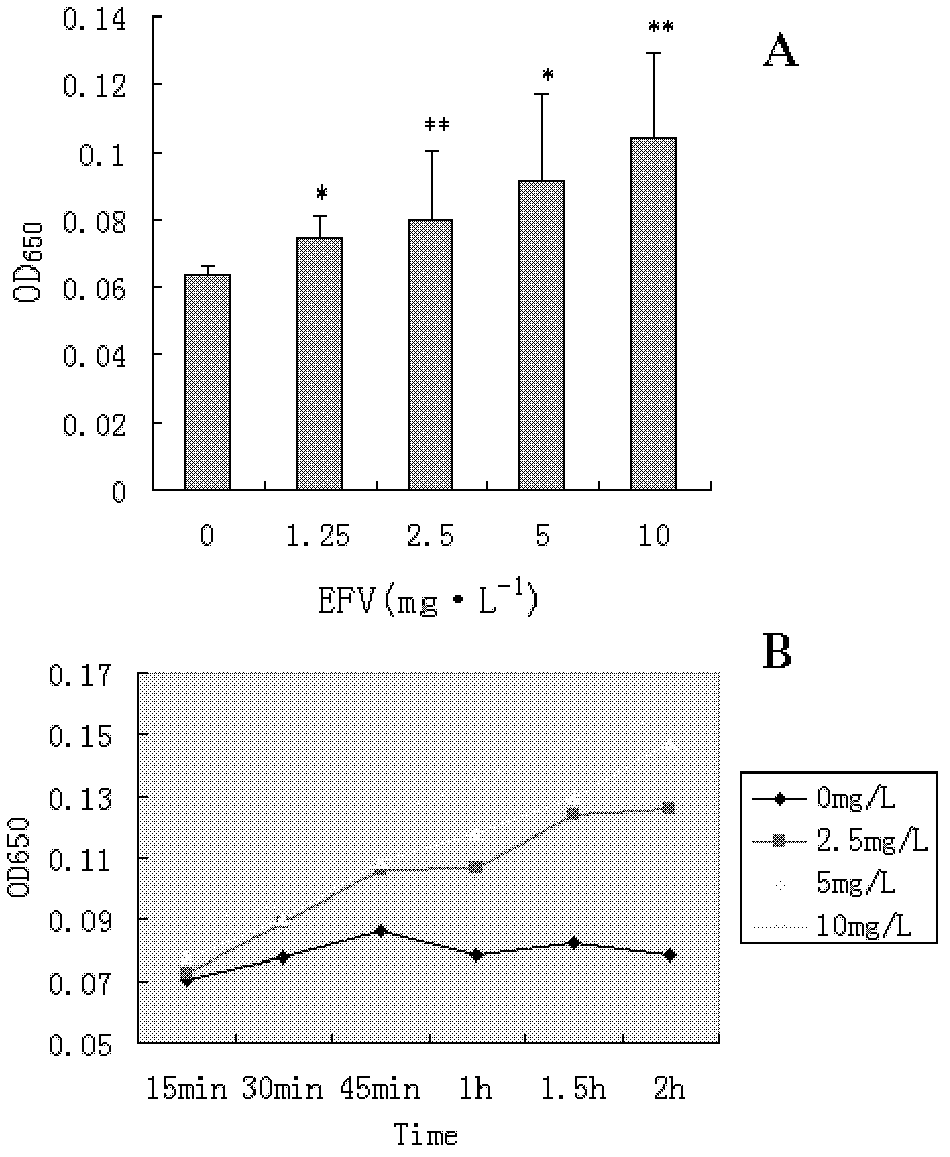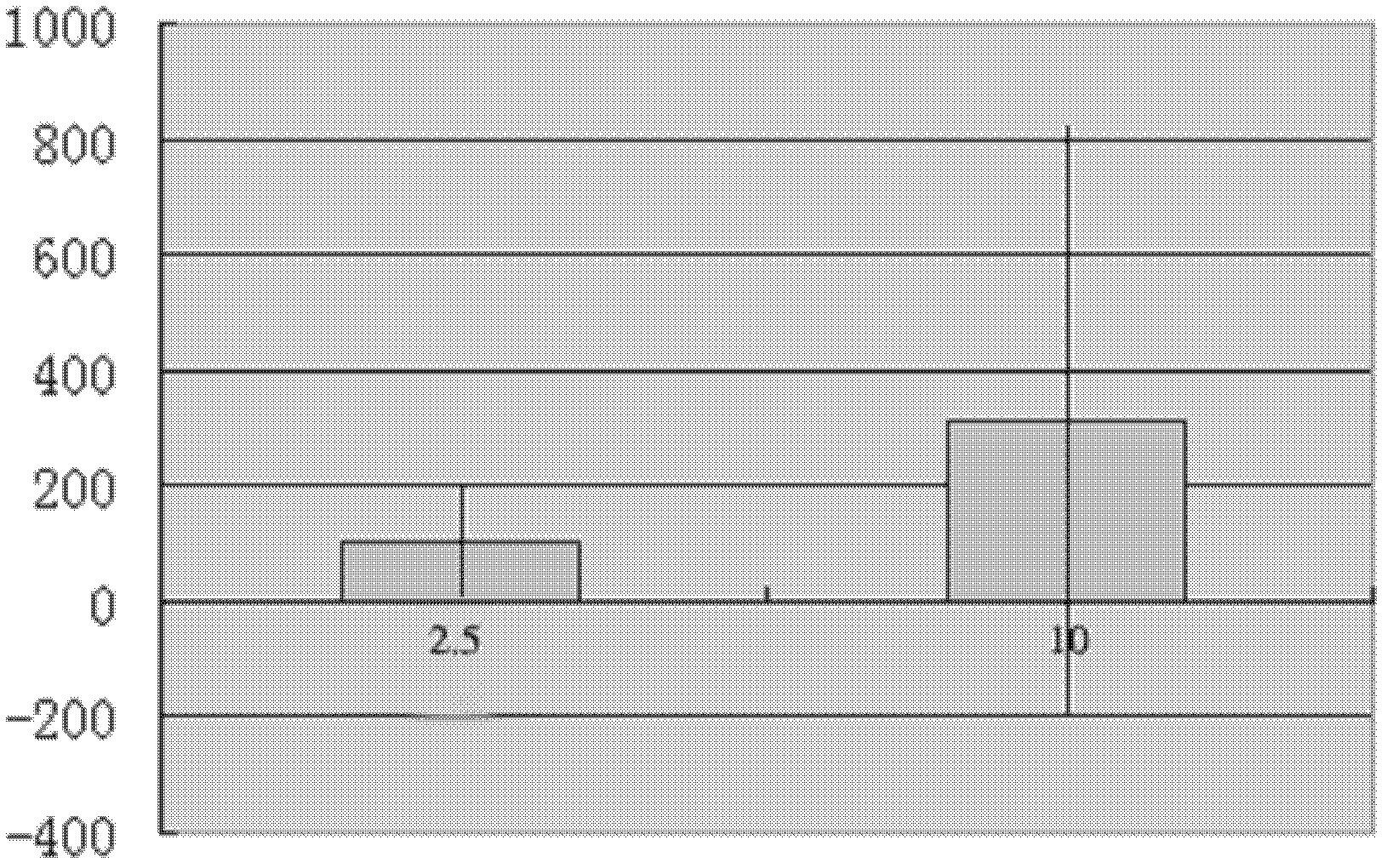Efavirenz hepatotoxicity molecular marker and application thereof
A molecular marker, efavirenz technology, applied in the field of preparation and detection of liver cytotoxicity molecular marker, D-3-phosphate glycerol dehydrogenase, can solve the problem of low drug resistance barrier
- Summary
- Abstract
- Description
- Claims
- Application Information
AI Technical Summary
Problems solved by technology
Method used
Image
Examples
Embodiment 1
[0022] Example 1 Preparation of Untreated and EFV-treated Hepatocyte Mitochondrial Protein Samples
[0023] The cell culture medium DMEM used in this example was purchased from Invitrogen Company, dextran T500, polyethylene glycol 3350, urea, thiourea, phenylmethylsulfonyl fluoride (PMSF), dithiothreitol (DTT) , 3-[(3-cholamidopropyl)-diethylammonium]-1-propanesulfonic acid (CHAPS) were purchased from Sigma, and EFV was purchased from U.S. Pharmacopeia.
[0024] In this example, different concentrations of EFV were used to detect ROS at different times. The results showed that the production of ROS was time- and concentration-dependent with EFV (such as figure 1 shown), the present embodiment selects 2.5 μg / L and 10 μg / L of EFV to treat the cells of liver cancer cells (Huh7) for 1 hour to carry out the experiment: collect the cell homogenate and break it up, separate the mitochondria with the method of two-phase centrifugation, and obtain Add lysis buffer (8mol / L urea, 4% CHA...
Embodiment 2
[0025] Example 2 Screening for differentially expressed proteins
[0026] Acrylamide, N,N'-methylenebis(acrylamide), glycine, sodium dodecyl sulfate (SDS), tris (Tris), urea, and glycerol used in this example were purchased from Amresco, USA, ammonium persulfate (AP), TEMED were purchased from Bio-Rad.
[0027] The cleaved proteins were separated by two-dimensional gel electrophoresis, analyzed by ImageMaster 2D Platinum 6.0 software to obtain differentially expressed proteins, and the obtained differentially expressed proteins were analyzed using a Diana upgraded liquid chromatography Ultimate3000 series high-capacity ion trap Mass spectrometry (LC-MS / MS) for separation and identification. Specific steps are as follows:
[0028] The first isoelectric focusing electrophoresis of two-dimensional gel electrophoresis uses a pH 3-10 non-linear gel strip. The electrophoresis program setting: hydration 30V, 12h; electrophoresis: 500V, 1h; 1000V, 1h; 8000V, 30min, gradient; 8000V, ...
Embodiment 3D-3
[0035] Embodiment 3D-Verification of differential expression of 3-glycerol phosphate dehydrogenase
[0036] The primers used in this example were synthesized by Invitrogen.
[0037] The RNA of hepatocytes was extracted, reverse-transcribed into cDNA, and PCR experiments were carried out using Invitrogen fluorescence quantification. The results were compared with the internal reference GAPDH. The relative quantitative formula was: 2-ΔΔCt(ΔCt=Ct(gene-GAPDH), ΔΔCt=ΔCt( Treatment group-untreated group).Finally determine the difference multiple of D-3-glycerol phosphate dehydrogenase in EFV treatment group and untreated group according to 2-ΔΔCt (results such as image 3 shown).
[0038] image 3 Shown in , compared with the content of D-3-glycerol phosphate dehydrogenase in the untreated group, the content in the EFV treatment group was significantly increased, indicating that D-3-glycerol phosphate dehydrogenase in EFV-treated hepatocytes There is a higher level of expression,...
PUM
 Login to View More
Login to View More Abstract
Description
Claims
Application Information
 Login to View More
Login to View More - R&D
- Intellectual Property
- Life Sciences
- Materials
- Tech Scout
- Unparalleled Data Quality
- Higher Quality Content
- 60% Fewer Hallucinations
Browse by: Latest US Patents, China's latest patents, Technical Efficacy Thesaurus, Application Domain, Technology Topic, Popular Technical Reports.
© 2025 PatSnap. All rights reserved.Legal|Privacy policy|Modern Slavery Act Transparency Statement|Sitemap|About US| Contact US: help@patsnap.com



